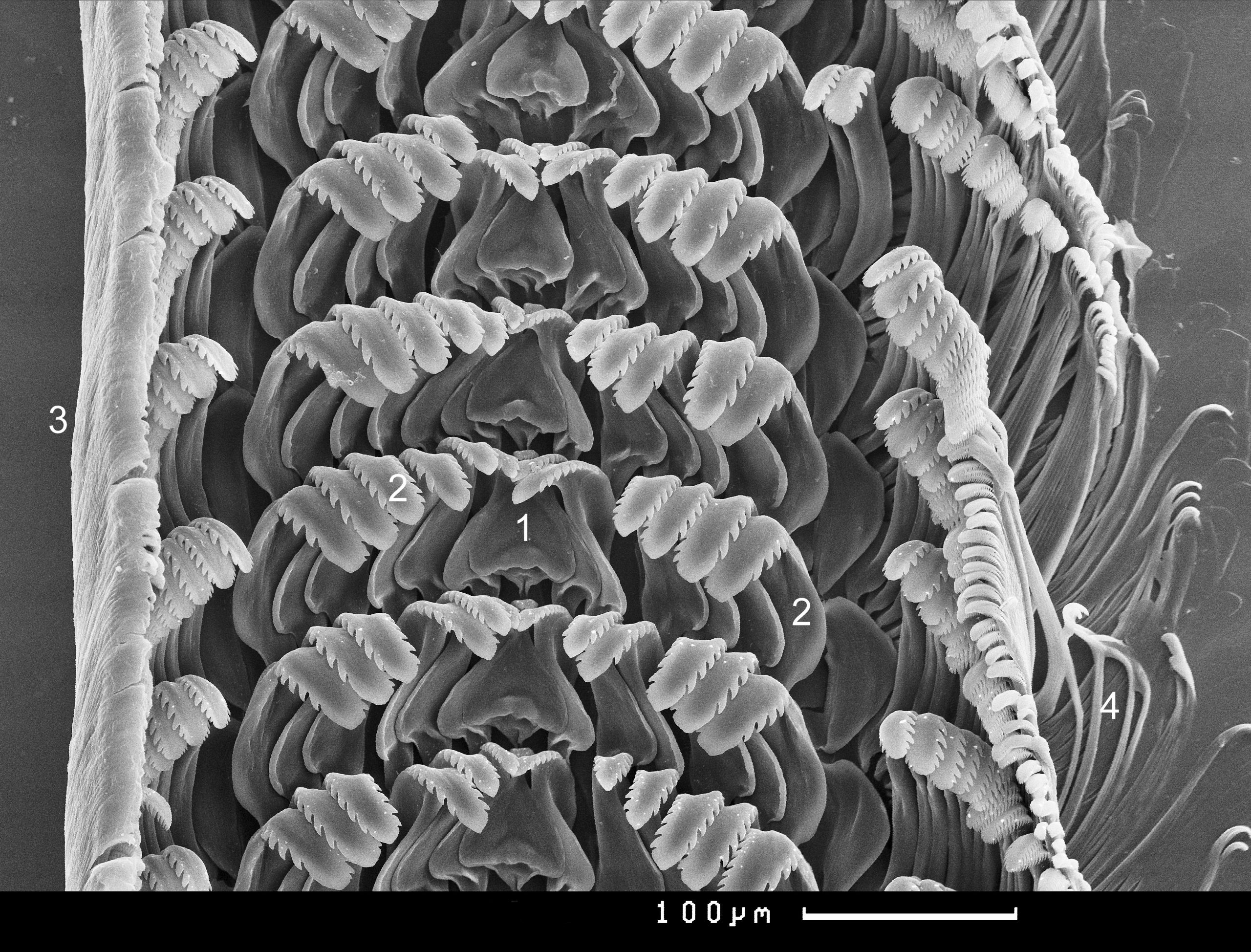In each row of teeth, the central rachidian (1) is flanked on each side by six laterals (2) with wide cusped stems, followed by numerous long bristle-like marginals (3 closed) & (4 partially spread).
M. helicinus feeds by sweeping microphytes (diatoms etc) and detritus from the substrate with its widely fanned rhipidoglossan radula, ‘rhipidos’ (Greek) = fan, with a ‘whirlpool motion’ (Gwatkin, 1914). The marginals act as brush and filter. The scoop-like stems of the rachidian and laterals act as a conveyor belt to the oesophagus for the swept in food.
17 Margarites helicinus. Six rows of radular teeth. Murman coast, northern Russia. Scanning electron microscope image frame 0.55mm wide. © I. Nekhaev.

